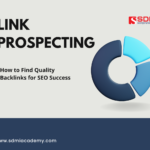In our digital era, simply having a website isn’t enough. Your site needs to be easily found by people searching for the products, services, or information you offer. This is where Search Engine Optimization (SEO) becomes crucial for success. This beginner’s guide will explain what SEO is, why it’s important, and how you can start improving your website’s visibility on search engines.
What is SEO?
SEO stands for Search Engine Optimization. It’s the practice of making adjustments to your website so that search engines like Google can find it, understand it, and rank it higher in search results. By optimizing your site, you increase the chances of attracting more visitors who are looking for content like yours.
Why is SEO Important?
- Increased Traffic: The higher your site ranks in search results, the more likely people are to click on it. This means more visitors coming to your site.
- Building Trust and Credibility: People tend to trust search engines, so if your site appears at the top of the results, it’s seen as more credible.
- Cost-Effective: SEO is a long-term strategy. Unlike paid advertising, which stops bringing in traffic when you stop paying, SEO can continue to drive traffic without ongoing costs.
- Staying Competitive: Your competitors are likely investing in SEO. To keep up and stay ahead, you need to optimize your site as well.
How Do Search Engines Work?
Understanding how search engines work is key to understanding SEO. Here’s a straightforward breakdown:
- Crawling: Search engines use bots (also called spiders) to discover new and updated content. These bots crawl the web, following links and collecting information about web pages.
- Indexing: The information gathered by these bots is stored in a massive database called an index. This is where the search engine keeps a record of all the web pages it has discovered.
- Ranking: When someone searches for something, the search engine looks through its index to find the most relevant pages and ranks them based on various factors.
Key Components of SEO
1. Keyword Research: Identifying the right keywords is essential for SEO success. Keywords are the terms people use when searching for content like yours. Use tools like Google Keyword Planner, Ahrefs, or SEMrush to find relevant keywords with a good search volume and manageable competition. Consider user intent, too—what are people actually looking for when they type in those keywords?
2. On-Page SEO: This involves optimizing individual pages on your site. Key elements include:
- Title Tags: Your title tag should be clear, descriptive, and include your main keyword. This is one of the first things both users and search engines see.
- Meta Descriptions: Write brief, persuasive descriptions that include your keyword and entice users to click on your link.
- Headers: Use header tags (H1, H2, H3) to organize your content. The H1 tag should contain your main keyword and give a clear idea of what the page is about.
- Quality Content: Create valuable, original content that addresses the needs and interests of your audience. Naturally incorporate your keywords into the text without overstuffing.
- URL Structure: Use simple, clean URLs that include keywords. Avoid long, complicated URLs.
3. Off-Page SEO: This focuses on building your site’s authority and reputation through external means. Techniques include:
- Backlinks: Get other reputable websites to link to your site. Quality is more important than quantity; links from authoritative sites carry more weight.
- Social Media: Share your content on social media platforms to increase its visibility and attract links. Engaging with users and sharing useful content can drive traffic to your site.
- Guest Posts: Write articles for other sites to gain backlinks and exposure. Make sure to target sites that are relevant to your niche and have a good reputation.
4. Technical SEO: Ensuring your website is technically sound helps improve its crawlability and indexability. Important aspects include:
- Site Speed: A fast-loading site is crucial. Users are more likely to leave a slow site, and search engines favor fast-loading pages.
- Mobile-Friendly Design: Make sure your site is responsive and works well on all devices, especially since mobile searches are so common.
- XML Sitemaps: Create and submit an XML sitemap to help search engines find and index your pages more efficiently.
- Robots.txt: Use a robots.txt file to manage which pages search engines should and shouldn’t crawl.
5. Local SEO: If you have a local business, optimizing for local search is essential. This includes:
- Google My Business: Optimize your Google My Business profile and ensure all information is accurate and complete.
- Local Listings: Make sure your business is listed in local directories. Consistent information across directories helps build trust.
- Reviews: Encourage satisfied customers to leave positive feedback online and respond to reviews to demonstrate that you value customer input.
6. Content Strategy: Having a solid content strategy is crucial for SEO. This involves planning and creating content that addresses the needs of your audience and incorporates your target keywords. Regularly updating your blog with fresh content can keep your site relevant and help attract more visitors.
Measuring SEO Success
To know if your SEO efforts are effective, you need to measure and analyze your performance. Tools like Google Analytics and Google Search Console are essential for tracking key metrics, such as:
- Organic Traffic: Discover the impact of search engine visitors. Look at overall trends and which pages are attracting the most traffic.
- Keyword Rankings: Track how well your pages rank for your target keywords. Use tools like Ahrefs, SEMrush, or Google Search Console to monitor your rankings.
- Bounce Rate: The percentage of visitors who exit after viewing only one page. A high bounce rate suggests that visitors are not finding what they seek.
- Conversion Rate: The percentage of visitors who complete a desired action, like making a purchase or filling out a contact form. This is crucial for measuring the effectiveness of your SEO efforts in driving business goals.
Practical Steps to Start with SEO
1. Audit Your Current Website: Before making any changes, understand where you currently stand. Use tools like Google Analytics, Google Search Console, and SEO auditing tools to get a comprehensive view of your website’s performance.
2. Identify Your Audience: Know who you’re trying to reach. Understanding your audience’s demographics, interests, and search behavior can help you tailor your SEO strategy more effectively.
3. Set Clear Goals: What do you want to achieve with your SEO efforts? Whether it’s increasing traffic, improving sales, or building brand awareness, having clear goals will help you measure success and stay focused.
4. Optimize Your Content: Review your existing content and optimize it for SEO. Ensure that each page has a clear focus keyword, a compelling title, and a meta description. Use header tags to structure your content and include internal links to other relevant pages on your site.
5. Improve Technical Aspects: Make sure your website loads quickly, is mobile-friendly, and is easy for search engines to crawl. Use tools like Google’s Page Speed Insights to check your site’s speed and find areas for improvement.
6. Build Quality Backlinks: Start by reaching out to websites in your industry and offer to write guest posts or collaborate on content. Share your content on social media and engage with influencers who might be interested in linking to your site.
7. Monitor and Adjust: SEO is not a one-time task. Regularly check your analytics and make adjustments based on what’s working and what’s not. Stay ahead of the game by staying informed about the newest SEO trends and algorithm updates to ensure your strategy remains impactful.
Common SEO Mistakes to Avoid
1. Keyword Stuffing: Overloading your content with keywords can make it difficult to read and may result in search engines penalizing your site. Aim for natural keyword integration.
2. Ignoring Mobile Optimization: With the majority of searches now happening on mobile devices, having a mobile-friendly site is crucial.
3. Neglecting Technical SEO: Issues like slow site speed, broken links, and poor site structure can hinder your SEO efforts. Make sure to conduct regular audits of your website to ensure that it is technically sound.
4. Not Tracking Performance: Without tracking your performance, you won’t know what’s working and what needs improvement. Use analytics tools to keep an eye on your key metrics.
Conclusion
SEO is an essential part of building a successful website. By understanding and implementing basic SEO practices, you can make your site more visible to search engines, attract more visitors, and grow your business. Remember, SEO is an ongoing process. Keep learning, adapting, and refining your strategy to stay ahead of the curve. With the basics outlined in this guide, you’re well on your way to mastering search engine optimization.






